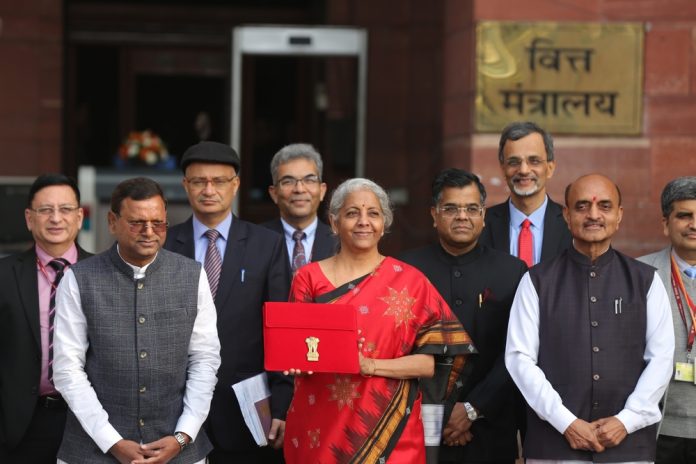In the 75th year of Independence, the Budget 2023 focuses on wide ranging reforms and sound policies. The PM’s vision of Sabka Saath Sabka Vikas has been instrumental to facilitate sustainable economic development. The government reckons the fact that Senior citizens are a vulnerable section of the society and the Budget 2023 has proposed some attractive changes for them.
Investments and Deposits
- The maximum investment limit for Senior Citizen Savings Scheme accounts has doubled from 15 lakhs to Rs 30 lakh. The scheme currently offers interest at 8% per annum and is a good move for conservative investors. Senior citizen investors generally are skeptical about market linked investments like Mutual Funds or shares and prefer a more secure mode of investment. For such investors, SCSS and MIS schemes suit well and interest rate is also good.
- The Government will also launch a new small savings scheme Azadi ka Amrit Mahotsav Mahila Samman Bachat Patra, for women. The one-time new small savings scheme will be made available for a two-year period up to March 2025. This will offer a deposit facility of up to Rs 2 lakh for a tenure of two years with an interest rate of 7.5 per cent with partial withdrawal option.
- The Finance Minister also raised the maximum deposit limit for MIS (Monthly Income scheme) from Rs 4.5 lakhs to Rs 9 lakhs for single accounts and from Rs 9 lakhs to Rs 15 lakhs for joint accounts.
Personal Income Tax
- The government had announced new tax regime in 2020. The new tax regime was aimed at bringing lower tax rate and simplified tax system as the earlier tax structure with deductions and exemptions was quite complex making it burdensome for tax administration and tax payers. The new tax regime does not allow specified tax deductions or exemptions for individual and HUF taxpayers and is simplified.
- In a major boost to the new income tax regime and to make it more pleasing to the middle-class common individual, the government has announced significant changes to the new income tax regime. The basic exemption limit in the new tax regime has been increased to INR 3 lakh, which was INR 2.5 lakh earlier. The rebate limit has been enhanced from Rs 5 lakh to Rs 7 Lakhs under Section 87A.
- For the individual tax payer, FY 2023-24 is another instance where the new tax regime will be made as default and taxpayers will have option to resort to old tax regime if they wish to.
- It is pertinent to note that the old tax regime has enough room for PPF, NPS along with some other concessions. On the other hand new tax regime has benefit of standard deduction and full tax rebate to income up to Rs7 lakhs annually. So the individuals having income higher than Rs 7 lakhs should exercise caution while choosing the regime and opt for the one that is more beneficial.

Here’s how the tax calculation in both the regimes work:
New Tax Regime (Default) 2023-24
| Net Annual Income Range (in INR) | Tax rate |
| 0-3 lakh | Nil |
| 3-6 lakh | 5% |
| 6-9 lakh | 10% |
| 9-12 lakh | 15% |
| 12-15 lakh | 20% |
| Above 15 lakh | 30% |
Old Tax regime
| Net Annual Income Range (in INR) | Tax rate |
| 0-2.5 lakh | Nil |
| 2.5-5 lakh | 5% (tax rebate is available) |
| 5-7.5 lakh | 20% |
| 7.5-10 lakh | 20% |
| Above 10 lakh | 30% |
- In case a taxpayer has investments in tax saving instruments, pays life insurance premium or mediclaim premium, home loan principal repayment, etc., it may be more beneficial to go for old tax regime since the benefit of deductions can be availed in old regime.
- Let us take an example to understand the difference in two regimes Taxpayer 1 : Has deductions and exemptions to claim
| Old Tax Regime | New Tax Regime | |
| Total Income | 20,00,000 | 20,00,000 |
| Less: 80TTA (interest deduction) | 50,000 | NA |
| Less: Deduction u/s 80C | ||
| LIC premium/ PPF/ NSC | 1,50,000 | NA |
| Net Income chargeable to tax | 18,00,000 | 20,00,000 |
| Tax on above | 3,66,600 | 3,12,000 |
- In new tax regime, salaried class and pensioners will get standard deduction of Rs. 50,000 and family pensioners will get the standard deduction of Rs.15, 000 as alike in old regime.
- Highest surcharge rate on the income above Rs 5 crore to be reduced from 37% to 25% under the new tax regime.

Healthcare
The Healthcare industry is one of the largest sectors in India and a key expenditure area for senior citizens. Below are the health industry highlights:
- The health sector has been allocated Rs 89,155 crore in the Union Budget 2023-24, which is a hike of around 13 per cent over Rs 79,145 crore allocated in 2022-23.
- The budget allocation for the AYUSH ministry has been increased from Rs 2,845.75 crore to Rs 3,647.50 crore, which is a 28 per cent increase.
- The government will take up the eradication of sickle cell anaemia in a mission mode. Sickle Cell Disease (SCD) is a genetic condition and is widespread among the tribal population in India and in other vulnerable populations.
Challenges
Rising costs of medical treatment remain a concern which has remained untouched in this budget. Current medical insurance deduction of up to Rs 50,000 to senior citizens and Rs 25,000 to others seems quite less as health insurance premia has been rising substantially in past few years.
Overall the budget seems to have taken a holistic approach in line with the on-going economic reforms.
*The author of this article is a partner of Vivek V. Joshi and Associates and is practicing taxation last 15 years.








